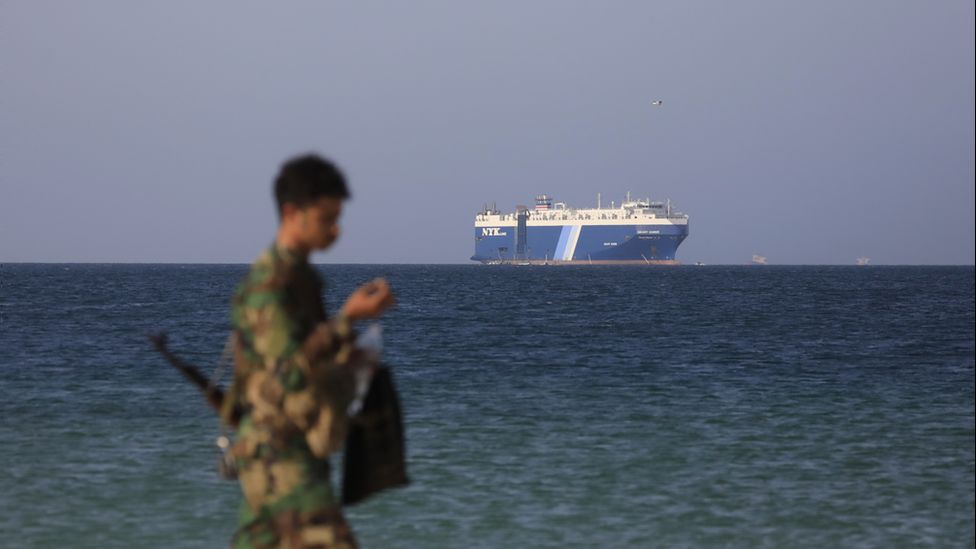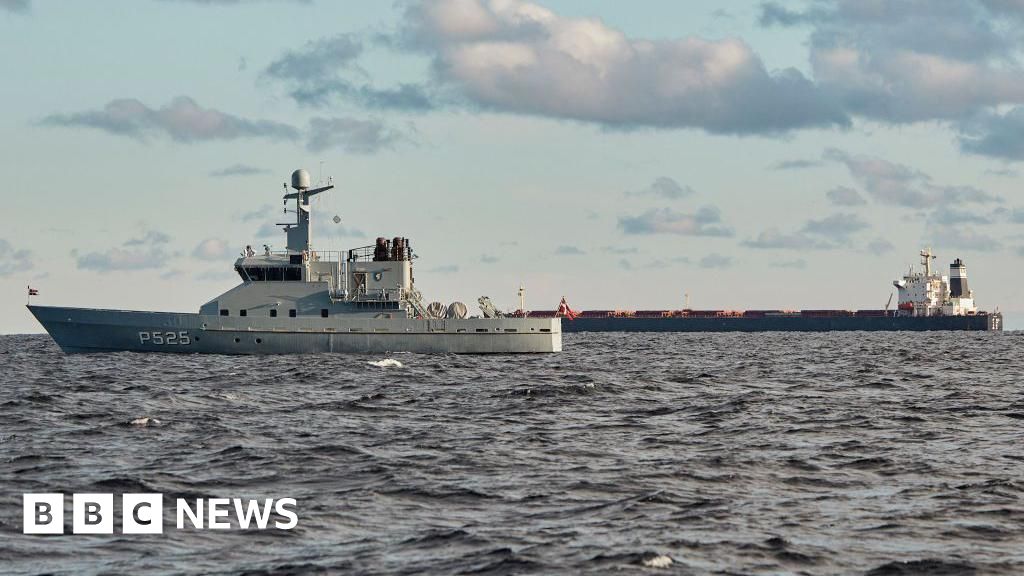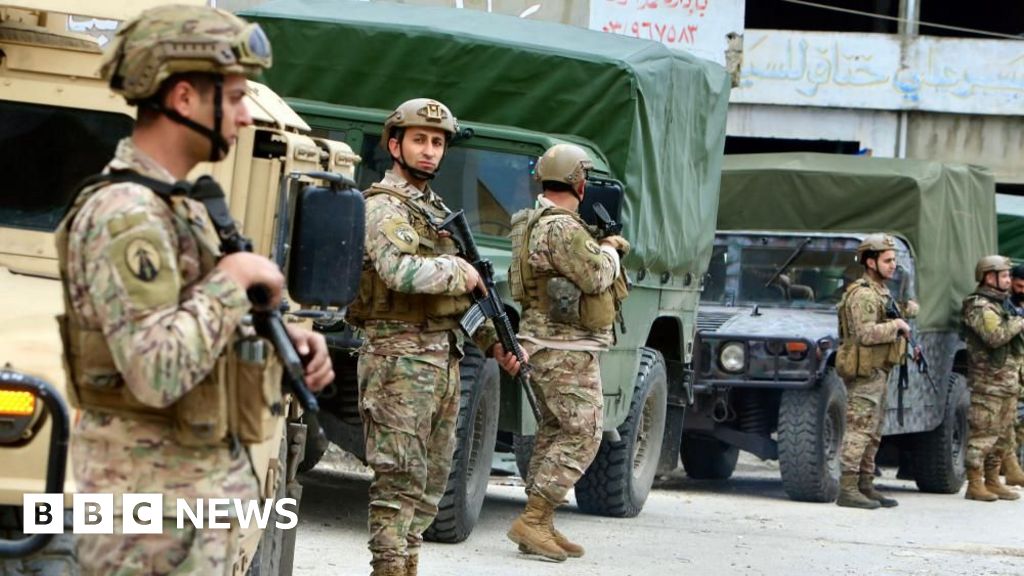ARTICLE AD BOX
 Image source, EPA
Image source, EPA
The attack by Houthis could have a direct impact on Israel's war with the Hamas in Gaza
By Frank Gardner
BBC security correspondent
It is well over 1,000 miles from the coast of Yemen to the Gaza Strip, and yet what happened last Sunday at the southern end of the Red Sea has the potential to dramatically escalate the war between Israel and Hamas.
According to US Central Command, the division of the US Department of Defence that covers the Middle East, Iranian-backed Houthi rebels in Yemen carried out four attacks on three commercial ships operating in international waters. The attacks involved a combination of explosive drones and anti-ship ballistic missiles.
The US Navy already had a guided missile destroyer in the vicinity, the USS Carney, which managed to shoot down three of the drones. Others hit their targets, causing some damage but no casualties.
"These attacks" said the Pentagon, "represent a direct threat to international commerce and maritime security." In a further statement it added that it believed the attacks from Yemen were "enabled by Iran".
The location of the attacks is significant. They took place just north of the strategic chokepoint of the Bab El Mandeb Strait, a 20-mile wide channel that separates Africa from the Arabian Peninsula and through which about 17,000 ships and 10% of global trade pass every year. Any ship passing through the Suez Canal and heading on south to the Indian Ocean has to pass this strait, close to the coast of Yemen.
So what was behind these attacks and what exactly is the link to Gaza?
Most of the populated parts of Yemen, including its Red Sea coast, have been under the control of a tribal militia known as the Houthis which overthrew the legitimate, elected Yemeni government in late 2014. They are backed by Iran which has allegedly been supplying them with weapons and training, including drone and missile technology, just as it has with Hamas in Gaza and Hezbollah in Lebanon.
Image source, Reuters
Image caption,The USS Carney destroyer shot down three drones fired from Houthi-held Yemen on Sunday
The Houthi coup triggered a catastrophic civil war that has dragged on for more than nine years, causing thousands of casualties and triggering a humanitarian disaster. While Iran backs the Houthis, Saudi Arabia and the UAE went to war against them in 2015, backed by the US and UK, in an unsuccessful bid to restore the internationally recognised government.
During this war the Houthis have fired numerous long-range missiles and drones at targets in Saudi Arabia, the UAE and inside Yemen, hitting civil airports, towns and petrochemical infrastructure as well as military targets.
Following the outbreak of the latest Israel-Hamas conflict in Gaza on 7 October, the Houthis declared their support for what they called "their brothers in Gaza" and have fired missiles and drones towards Eilat and other targets in Israel. These were intercepted by the US Navy's USS Carney which shot them down.
Watch: Yemen's Houthis released video footage showing armed men dropping from a helicopter and seizing a cargo ship
But the Houthis have also targeted any shipping which they suspect of having Israeli connections. In November they landed troops by helicopter on the deck of a cargo ship, the Galaxy Leader, and seized it. They have vowed to prevent any Israeli vessels from passing their coast and in a statement on Sunday their military spokesman said the vessels they fired missiles at were attacked because they were "Israeli". Israel's military denied any connection between its government and the ships but media reports say there are some private commercial links with wealthy Israeli businessmen.
The US has said subsequently it is "considering all appropriate responses in full coordination with its allies and partners".
In practice, Washington will be reluctant to raise tensions any further in a region already nervous about spill-over from the war in Gaza. But if the Houthis in Yemen continue to fire missiles beyond their borders, then eventually the US may decide it needs to retaliate by targeting those missile launch sites. If that happens then there follows the risk that Iran, which supports the Houthis, could also retaliate, potentially leading to the nightmare scenario of a direct conflict between Iran and the US. For now, this is something both sides wish to avoid.

 1 year ago
20
1 year ago
20








 English (US) ·
English (US) ·